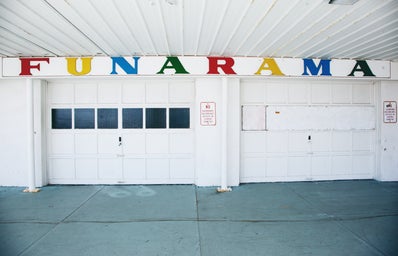How did the second “Mamma Mia!” film stack up against the first?
Well, in contrast to the original “Mamma Mia!,” “Mamma Mia 2” goes back and forth between the present, the grand opening of “Hotel Bella Donna,” and the past, which follows young Donna’s transition from college into the real world — though her “reality” happens to be the most romantic place on earth. In contrast, the first “Mamma Mia!” film never veers from the present, though it implies what Sophie’s fathers were like in their early twenties.
In terms of music, a few original “Mamma Mia!” songs reprise in the second film, to the joy and appreciation of many viewers. That being said, many new musical numbers are introduced, all of which I enjoyed. And, seeing, as the second “Mamma Mia!” received a higher “fresh” percentage on Rotten Tomatoes, film critics seem to share my feelings. There’s something about retro-70s pop music that vibes with people of all ages and professions.
Now, “Mamma Mia! Here We Go Again” supposedly takes place just five years after the first film, but let me tell you, the characters definitely don’t give the same impression. Not to be cut-throat, but all of Sophie’s fathers, acquaintances and even Sophie herself, appear to have aged at least a decade years since “Mamma Mia!” was first released in 2008 — and rightfully so, as the two motion pictures were filmed 10 years apart. A more reasonable time-frame should’ve been chosen by directors, as five years seems almost inconceivable.
Returning to music, film critics openly disliked the singing voices in the original “Mamma Mia!”, particularly that of Pierce Brosnan. I must say, his voice definitely isn’t Broadway-quality, but he suits his character, Sam, to a tee – so I could handle a few voice cracks and missed notes. There’s also an entire Broadway musical album dedicated to the play, so listen to that instead of the movie-album, if you’re not a Brosnan fan. And, if you ask me, ABBA’s music has already been butchered by countless DJs and in numerous karaoke bars, so cut 007 a break.
Another aspect of “Mamma Mia! Here We Go Again!” that affected both critics and audience members is the final scene of the film, which really gives an emotional punch. When Sophie discovers she’s pregnant, she claims that she’s “never felt closer” to her mother, as Kalokairi is where Donna first learned of her pregnancy. Once she delivers her child, and attends his/her baptism ceremony, the film flickers back and forth to young Donna delivering Sophie, and the present — the finale being “older Donna” (Streep) greeting her daughter and grandchild at the altar.
Although its final scene definitely hits home, many fans are still awe-struck over Donna’s unexpected death: “It was hard to get excited when I’m thinking… ‘How did she die? Why kill off the main character?’ It didn’t make sense for them to be happy. It’s like making Captain America without Captain America.” That being said, I definitely agree with an opposing review on Rotten Tomatoes, as I’ve grown to be a Lily James fan: “Although it doesn’t have Meryl Streep, the way it jumps from present to the younger Donna’s life is entertaining.”
Personally, I prefer the original “Mamma Mia!” film over the sequel, though I definitely enjoyed “Mamma Mia! Here We Go Again” – mainly due to Lily James, Colin Firth (who plays a great “Headbanger Harry”) and its emotional finale.

